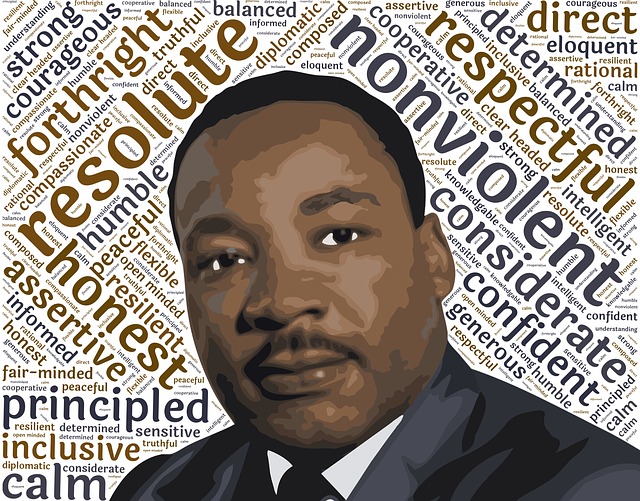In a fast changing world, where people are becoming more and more connected via technology, and brands and prominent people have become powerful influencers (trendsetters, torch-bearers, thought leaders) it is not only an absolute necessity for businesses and, more specifically, business leaders to be transparent regarding their business practices, it is a “no brainer” in order to create a much stronger brand in this ever evolving information age.

Strength here is not about size but about a core facet that embodies trust, integrity and ethical values, in other words "truth".
At the same time, in a world of fake news, dodgy dealings, corruption and dishonesty, there is a greater call than ever before for individuals, companies, leaders and governments to act in the best interests of their stakeholders - their communities, their clients and employees, and the people they represent. People want those they support (be it a person, leader, company or government) to not simply make the right noises, but to actually do the right thing, to do what they say they will do and to keep promises.
In the modern context, “truth” has a meaning including honesty and integrity; not telling a lie or misleading someone; owning up and opening up. It may be an assertion that is certain, accurate and incorrigible. And the idea that it sets one free means that being open and honest brings its own empowerment, and liberation of the emotional and spiritual aspects of the person doing the telling of the truth.
An example of this, in the South African context, was the Truth and Reconciliation Commission where perpetrators of political crimes under apartheid were provided the forum for telling their stories and seeking forgiveness from their victims and their victims’ families. In this way, there was intended to be “reconciliation” between the oppressor and the oppressed. It was supposed to clear the air and offer some sort of better moral foundation for the new South Africa to grow and prosper; a sort of spiritual “rebirth” for the new democracy that was SA in the nineties. Whether it achieved its purpose may be debatable, but anyone who has gone through any sort of revelatory process, who has “come clean” and faced their own (moral or literal) dishonesty or criminal conduct, will know the power of finally telling the truth – it is a relief. The truth is powerful and it does empower.
In the modern world of big business and government, we see many examples of lying, dishonesty and corruption. And as technology has become embedded in our daily lives, the power of the media (social and traditional) means that dishonesty is uncovered more easily and values such as trust, integrity and transparency are admired and prized. A business or government leader, or a company or brand that can be trusted, that holds itself and its actions to account, is listened to, is followed and is emulated.
With a business, brand, leader or individual that has been dishonest, we offer a means of coming clean, of facing up to the dishonesty, seeking forgiveness and to start afresh. We have taken the idea of the Truth and Reconciliation Commission and have adapted it for clients in the business/leadership context.
As an overview, we take the client through a process that follows, more or less, the following steps:
- step one is understanding the problem/the dishonesty, i.e. in confidential meeting/s, we explore with the client the nature of the dishonesty. In many cases, individuals caught up in crises are unable to fully understand where they went wrong, what they have done and what the consequences of this are. This is particularly important for clients who may feel nervous to “expose” themselves, or who have legal representation or where their advisors counsel keeping silent or denying everything;
- step two is coming clean. Depending on the circumstances and the client, this is generally a more “public” process where the client is assisted to address either the victims of the dishonesty or a select person or group that may question the client and the nature of the dishonesty. It is about the client “facing up” to the wrong committed. This may be recorded. We have separate meetings between both sides before the public process in which we prepare both sides and this includes a sound understanding of what is expected from them both and what impact they may have on each other. The client is supported and coached by us and we facilitate the process or meetings between the client and the person/group being addressed;
- step three is clearing the way forward for the client to redress wrongs. The context will always dictate what happens here, but the focus is on forgiveness and moving forward. For example, where step two has led to a settlement, agreement or mutual understanding between the client and the person/group addressed, there may be a formal decree of forgiveness or other indication of the acknowledgment of the dishonesty and the agreement reached around it. We facilitate the way forward and ensure clarity (both document and otherwise) on what has been decreed or decided upon;
- step four is a follow-up to ensure that the above process has actually led to the desired result. We meet with the client and, where required, with other parties affected by the dishonesty, to ensure that the “truth” has been fully aired, that everyone is on the same page and that the client is indeed moving forward in the desired way.
The above steps may take a few sessions over a matter of days or a number of sessions over many weeks. But the process is designed to be quick and effective, to bring results and to be forward looking.
“The truth will set you free, but you have to endure the labour pains of birthing it” (quote by Iyanla Vanzant).